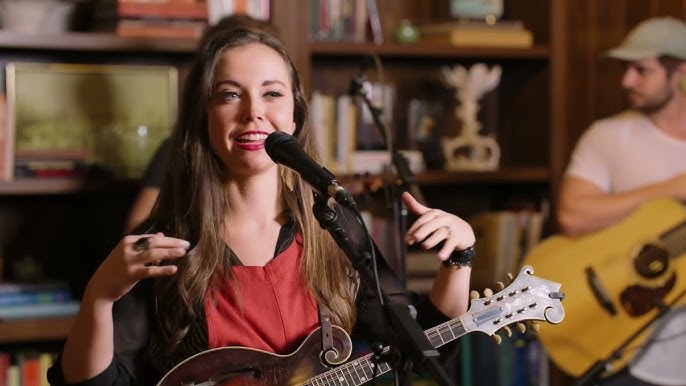
Sierra Hull: Fully formed philosophically and musically…
Spitfire by Nature
By David McGee
 A TIP TOE HIGH WIRE
A TIP TOE HIGH WIRE
Sierra Hull
Sierra Hull Music
It was 2016 when Sierra Hull’s music took an adventurous and personal turn in the spare, more experimental (and tellingly titled) Weighted Mind. Come 2020 she released another gem of an album, 25 Tips, marking the first quarter-century of her life in frank, and frankly startling, terms describing a broken heart in the wake of broken trust and broken promises (by far the most personal of her original songs to that point) It was her final effort for Rounder Records, where she made her debut at age 16 in 2008. Five years later she’s returning on her first independently released album, this time with a captivating deep dive into positivity and resilience. Fueled by frequently awesome displays of instrumental virtuosity courtesy the gifted Ms. Hull’s mandolin mastery and the sublime support of her formidable touring band (especially fiddler Avery Merritt), the messages here are potent and piercing.

‘Boom,’ Sierra Hull, from A Tip Toe High Wire

‘Come Out of My Blues,’ Sierra Hull with Tim O’Brien, from A Tip Toe High Wire
Guests include Bela Fleck, whose banjo gets into a bracing, angular Olympian sprint with Sierra’s mandolin on the barnburning instrumental “E Tune,” and the always solid Tim O’Brien, adding a spry second vocal to the uplifting sentiments of “Come Out of My Blues,” a full-on bluegrass sprint driven by mandolins and Merritt’s furious, zigzagging fiddle before the musicians mesh in a unison thrust to set up the triumphant chorus celebrating the singers’ triumph over hard times. But it’s tunes such as “Boom,” with its low-key Bobbie Gentry spirit, counseling a pro-active stance in pursuit of happiness that unabashedly herald her emergence into a brighter world—“You gotta open up the window/you gotta let some sunlight in/‘cause it’s a beautiful day, so let the shadows have the shade/and then boom—live to love again.” On another uplifting personal story, folk flavored in an acoustic guitar-dominated soundscape (Sierra on acoustic), “Spitfire” documents her grandmother’s indomitable spirit in the face of persistent and horrific personal tragedies (a widow at 18; a baby killed in a car crash; another husband dead from addiction) and identifies with grandma’s tenacity, proclaiming, “She’s in my blood, oh, she’s a spitfire…” (being a spitfire is indeed in the family blood—Sierra, through her mother’s family, is distantly related to Cordell Hull, FDR’s controversial but productive Secretary of State for 12 years, who won a Nobel Peace Prize for his role in the founding of the United Nations). Addressing the tenor of the times, the tender, wistful reflection “Redbird” finds Sierra offering a prescription for keeping balanced amidst tyranny: “…remind me what I know/snow it will melt/and flowers grow/everything will be as it should be…” All in all, these smart, captivating songs reveal the strong, assertive 33-year-old woman Sierra Hull has become since her mid-teens debut. Fully formed philosophically and musically, she’s a truly wondrous artist.

‘Spitfire,’ Sierra Hull, from A Tip Toe High Wire

‘Redbird,’ Sierra Hull, from A Tip Toe High Wire
Sierra Hull in Deep Roots & TheBluegrassSpecial.com
Deep Roots
The Elite Half Hundred of 2016, Part 1–review of Weighted Mind
May 2008, The Bluegrass Special cover story: 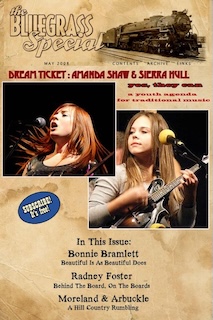
Amanda Shaw & Sierra Hull Advance the Youth Agenda In Traditional Music
By David McGee
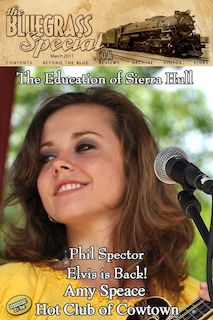 March 2011, The Bluegrass Special cover story
March 2011, The Bluegrass Special cover story
Almost Grown: The Education of Sierra Hull
Nearing graduation from the Berklee College of Music in Boston, Byrdstown, Tennessee’s Sierra Hull is growing up artistically as well with the release of Daybreak, as torchy a bluegrass album as you’re likely to find right now. She’s come a long way, baby. By David McGee
***
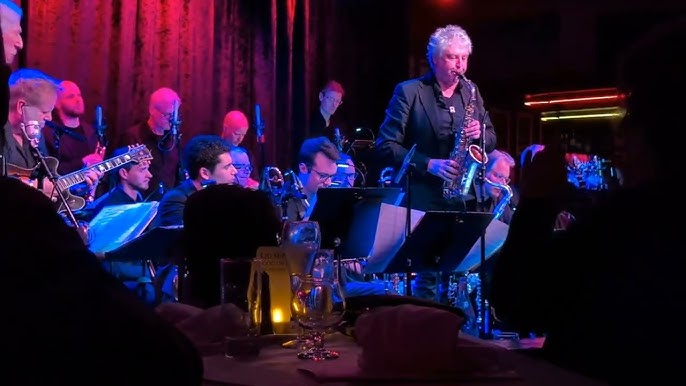
Bob Mintzer & The WDR Big Band
Wherein Everyone Shines
By David McGee
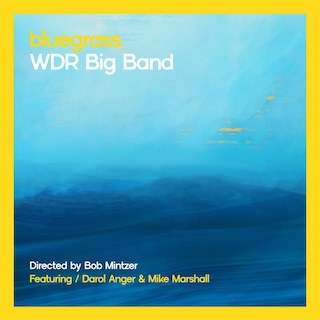 BLUEGRASS
BLUEGRASS
WDR Big Band featuring Darol Anger & Mike Marshall
MCG Jazz
Virtuoso Americana violinist-composer-teacher (and founding member of the David Grisman Quartet) Darol Anger experienced a dream in which he found himself on a German television show, playing bluegrass with his long-time partner (of 42 years) in roots music virtuosity, mandolinist-guitarist Mike Marshall, backed by a big band. Over the Atlantic, in Germany, Arnd Richter, producer of the acclaimed WDR Big Band, shared his idea for a hybrid concept mating bluegrass with big band arrangements with WDR founder/producer Bob Mintzer, who has made a notable career of hybrid big band arrangements mating seemingly disparate styles in unexpectedly seamless ways. In his liner notes for this release, Mintzer speaks of researching Marshall’s “vast catalogue” and realizing “there was a commonality between what he was doing and what the WDR Big Band could provide as a setting for the music at hand.” He adds: “Further inspection revealed that Mike and Darol Anger had collaborated on numerous projects together and clearly had an incredible musical bond.”

‘Down In the Willow Garden,’ Bob Mintzer and the WDR Big Band featuring Darol Anger & Mike Marshall; solos by Bob Mintzer (tenor saxophone) and Darol Anger (violin), from Bluegrass

‘Green Lawn,’ a Bob Mintzer original, by Bob Mintzer and the WDR Big Band featuring Darol Anger & Mike Marshall, with solos by Mintzer (tenor saxophone), Marshall (mandolin), and Anger (violin), from Bluegrass
For his part, Marshall recalled “we had the incredible experience of spending an intensive week rehearsing, recording and performing our own music with one of the greatest big bands of all time. And we had the pleasure of doing it with someone who we consider a mentor, a musical hero and now a friend, Bob Mintzer. Bob completely understood how this incredible band could be interwoven into the fabric of our otherwise intimate string band music. He wrapped us up in this warm blanket of sound with his amazing sense of harmony, color and rhythmic interplay, never losing the real essence of the music the way Darol and I might play it as a duo.” Anger adds: “As the fiddler of note in this scenario, I can happily say that this recording constitutes a career peak, a highlight, and an astonishing privilege. To hear our composition refracted through the mind of a musical giant such as Bob is an experience that few fiddlers may ever get. … And to perform within a super-excellent, classic big band is pretty close to a unique experience in these days of electronically generated musical constructs.”
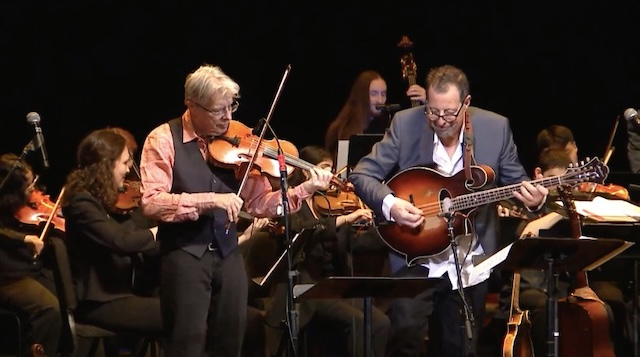
Darol Anger (left) and Mike Marshall: ‘…an incredible musical bond…’
The album’s nine tunes include two traditional songs (three, actually, as two are blended into the second track’s medley), four Marshall originals, two Anger originals, and one Mintzer composition (“Green Lawn,” featuring solos by all three principals). That Mintzer’s contribution is the shortest of the nine tracks at 6:30 indicates how much room Mintzer’s arrangements gave for the improvisational solos by Marshall, Anger and various WDR members. Everyone shines.
Marshall’s energetic mandolin runs underscore the truth of the tilte of his opening track, “Slip and Slide,” with the muscular WDR horns offering bursts of energy complementing Marshall’s racing pace, all setting up a swaggering, bluesy sax solo courtesy Karolina Strassmeyer that ascends to his instrument’s wailing upper register as the theme-and-variation template unfolds over seven minutes, but not before Marshall returns in the last two minutes still at a lively pace but more tender and introspective. It’s as seamless and exhilarating a stylistic blend as what Corky Siegal’s Chamber Blues has achieved over the course of three acclaimed albums blending blues and classical. More surprises loom in the second track, a medley of late 1800s fiddle tunes, “Elzic’s Farewell” and “Yew Piney Mountain,” running to almost nine minutes but featuring Marshall and Angor only in discreet support low in the mix while Johann Hörlen (saxophone) and Ruud Breuls (trumpet) contribute until, with about three minutes left, the big band drops back and leaves the floor for Anger to cut loose with a sputtering, frisky solo fiddle romp that returns the ambience to its Appalachian roots before the big band steps out with a complementary blast to bring the festivities to a boffo close. The other traditional tune, “Green Willow,” clocking in at 9:10, is a moody meditation on a 19th century murder ballad (also known as “Rose Connelly”) with Mintzer’s tenor sax solo and Anger’s violin solo evoking both the sorrowful narrative and the anguished emotions fueling it (an uncredited trumpet solo and a striking taste of Billy Test’s piano enhance the evocative atmospherics. If the mere title “Green Lawn” suggests placid scenes, think again: the tune is buoyant and bright, with Mintzer (again on tenor sax), Anger, and Marshall in spirited give-and-take solos, answering each other with ever increasing intensity as the horns take off and set up a memorable moment when all three soloists join together, culminating in a rousing finale.

‘Borealis,’ Bob Mintzer and the WDR Big Band featuring Darol Anger & Mike Marshall; solos by Bob Mintzer (EWI), Darol Anger (violin), and Mike Marshall (guitar), written by Mike Marshall, from Bluegrass

‘Elzic’s Farewell/Yew Piney Mountain,’ two traditional tunes from the late 1800s, as performed by Bob Mintzer and the WDR Big Band featuring Darol Anger & Mike Marshall; solos by Johan Hörlen (saxophone) and Ruud Breuls (trumpet), from Bluegrass
Anger’s “Replace It All” adds a funky touch to the proceedings, thanks to drummer Dominik Raab’s lowdown groove, with spirited solos by Marshall, Anger and tenor saxophonist Jeremy Powell upping the rhythmic ante. Despite its title, “In the Lion’s Den,” a Marshal original, is a bright, upbeat outburst, with arguably the most pronounced bluegrass flavor in Marshall’s and Anger’s fleet-fingered solo spots, whereas Paul Heller’s honking tenor sax injects a hint of pop sensibility amidst its boisterous jazzy improvisationsm, which in turn are answered by another Anger solo, this one practically emulating and building on Heller’s moment. And failing to mention Marshall’s album closing gem, “Borealis,” would fall into the realm of criminal oversight, as over the course of 8:50 Marshall’s emphatic, highly emotional acoustic guitar soloing, supported by Anger’s breakneck fiddling, horns that alternately rise triumphantly and hum quietly, and bright-eyed chirping in Mintzer’s pop-flavored EWI solo, pull the arrangement across multiple soundscapes, from big band to bluegrass to jazz to pop in a moment that rather sums up one of the most memorable musical summits we’re likely to hear this year. The title, Bluegrass, may be meant ironically, since there’s so much more going on here beyond the bluegrass elements. Maybe that’s the message of the curious cover photograph (or painting) of a stormy ocean at twilight: Ride the waves herein.
More Bob Mintzer in Deep Roots:
Blue Soul by Dave Stryker with Bob Mintzer and the WDR Big band
Groove Street by Dave Stryker with Bob Mintzer and the WDR Big Band
***
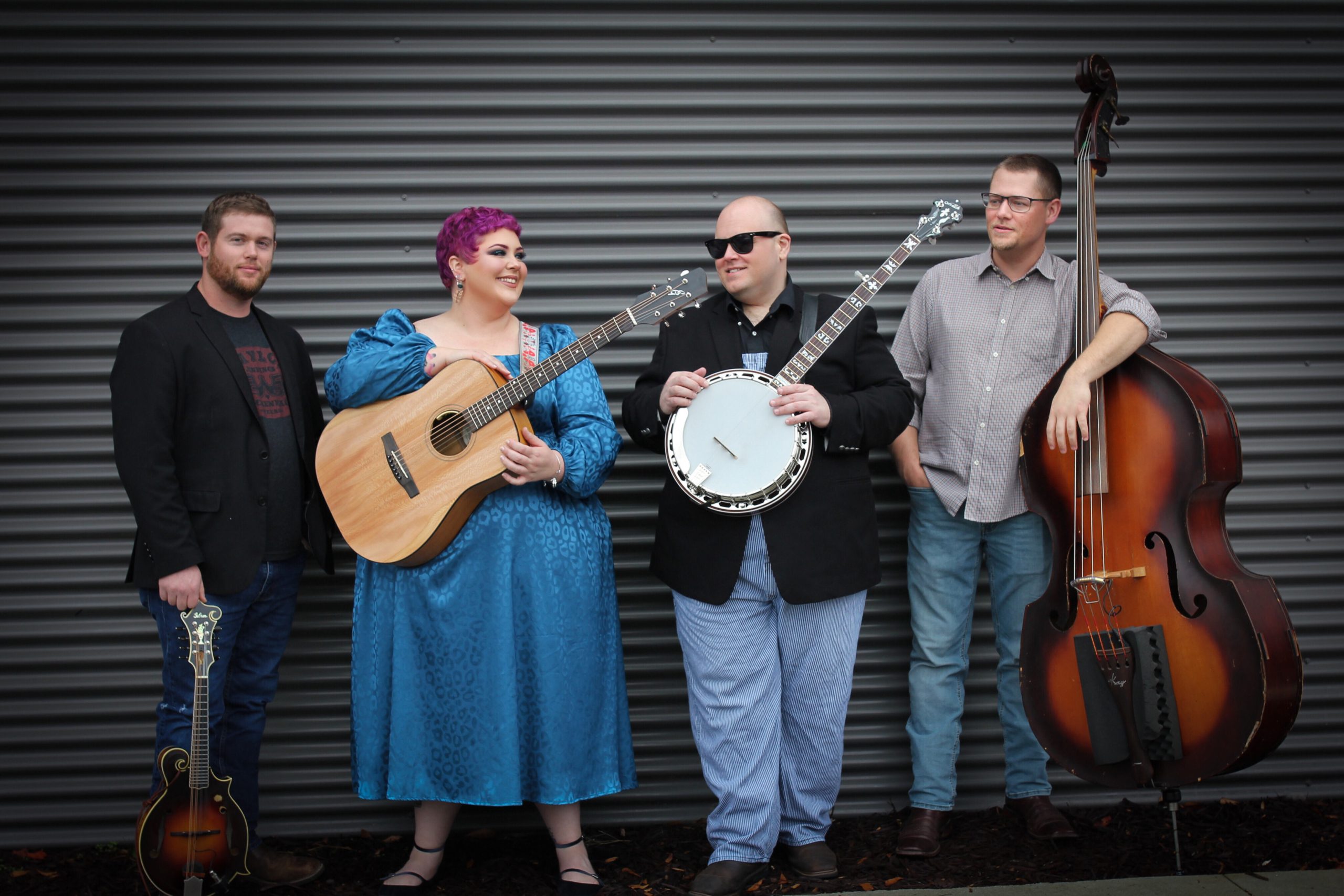
Red Camel Collective (from left: Jonathan Dillon, mandolin; Heather Berry Mabe, lead vocals and guitar; Tony Mabe, banjo; Curt Love, bass): Extra-musical messaging of a higher and timely order…
Exercising the Collective Will
By David McGee
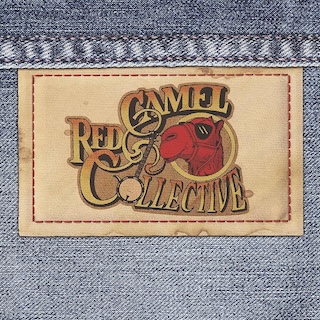 RED CAMEL COLLECTIVE
RED CAMEL COLLECTIVE
Pinecastle Records
Talk about bluegrass bonafides. The principal members of Red Camel Collective—husband and wife Heather Berry Mabe and Tony Mabe, Curt Love, and Jonathan Dillon—have put together an impressive debut album while continuing as Junior Sisk’s band. Their band name, in fact, is an homage to Sisk and his beloved tune “The Man in Red Camels,” a touching reminiscence focused on an elderly gent recognizable by the Red Camel overalls he always donned when plowing his fields. The tight musicianship, the expressive vocals, the heart touching songs—you recognize the standard of excellence Junior surely had a hand in establishing.
![Red Camel Collective - Roll On Mississippi [Official Video]](https://i.ytimg.com/vi/6NpqFIyCK9k/hqdefault.jpg)
‘Roll on Mississippi,’ a 1981 hit for Charley Pride written by Kye Fleming and Dennis Morgan. Heather Berry Mabe, lead vocal and guitar; Jonathan Dillon, mandolin; Tony Mabe, banjo; Curt Love, bass; Stephen Burwell (not shown), fiddle. From Red Camel Collective.
The 10 tracks here are equally divided by Heather Berry Mabe originals and inspired covers of vintage country and bluegrass gems. The Collective’s sound is further enhanced at points by contributions from fiddlers Stephen Burwell (on five numbers) and none other than Michael Cleveland on the album closing toe-tapper, “Last Time I Saw Him,” the Michael Masser-Pam Sawyer co-write that was a Top 20 hit for both Diana Ross and Dottie West in 1974, with Ross’s rousing version blending pop, Dixieland, and country elements (including, Beyoncé, a banjo—no, you didn’t discover the instrument) whereas West stuck to more traditional ‘70s country style (meaning the arrangement had a pop lilt but nothing as extravagant as the Ross version produced by Masser and arranged by Michael Omartian and Gene Page). RCC’s version hews closely to West’s version but with bluegrass mandolin chop and high lonesome harmonizing on the story about a woman realizing her man, who had made off with a bundle of her cash to seek brighter pasture for the couple, wasn’t coming back. With Sharon White and Suzanne Cox joining Heather in evocative harmony, Cleveland steps in with a tear-stained fiddle solo before the women join voices in repeating the title sentiment as the song fades, emphasizing their fading hope in the gent’s return.
“The Last Time I Saw Him” closes the album on an upbeat, if sad, note; its bookend at the start is another well-chosen cover, “Roll On, Mississippi,” a 1981 hit for Charley Pride written by Kye Fleming and Dennis Morgan. For Pride, this wistful reminiscence of his home state hit close to the bone, and here RCC, lead by Heather’s measured, nuanced vocal with its aching upper register flights (when she soars into “You make me feel like a child again,” you feel it down deep), makes it a statement all their own, with poignance enhanced in solo turns by Jonathan Dillon on mandolin, Tony Mabe on banjo, and Stephen Burwell on fiddle.
![Red Camel Collective - Daughter of the Stars [Tribute Video]](https://i.ytimg.com/vi/oK1BmCPbxRw/hqdefault.jpg)
‘Daughter of the Stars,’ written and leave vocal by Heather Berry Mabe, from Red Camel Collective

‘In Spite of Me,’ written and lead vocal by Heather Berry Mabe, from Red Camel Collective
And what of Heather Berry Mabe’s originals? Solid, with the advantage of the writer herself being the voice bringing singular expressiveness to the words. A sprightly, banjo-driven midtempo strut, “In Spite of Me” benefits from the aching upper register to which she ascends in marveling at her good fortune in finding supportive love at her moments—the way she caresses the line “a heart that beats with love for you always” hits you where you live. Her soft, mountain timbre, the hint of a cry in her delivery, and her tender way with lyrics recalls no one so much as Rhonda Vincent—she really is that affecting. Even more affecting, the soft ballad “Daughter of the Stars,” which Heather says she wrote in 15 minutes as a letter to her childhood self, and the video of which identifies it as as a “song dedicated to women everywhere, especially the women of bluegrass music.” Its consoling advice can’t be said, or sung, too often to little souls ill-equipped to rebuff the personal slings and arrows directed their way, so when Ms. Mabe’s voice rises to counsel, “You feel ashamed of your body now/but size don’t equal beauty anyhow/you’re pretty and you’re kind/you’re more than lovely just the way you are…,” well, the lovely melody, the understated instrumental support gently framing the message, and the tender voice delivering it with authority combine to make it more than a song. In many ways, Ms. Mabe’s songs carry extra-musical messaging of a higher and timely order. This is collective will, if you will, at work, focused on advancing the common good over special interests. For this reason, among many others, when Red Camel Collective plays, attention must be paid. Long may they wave.
***
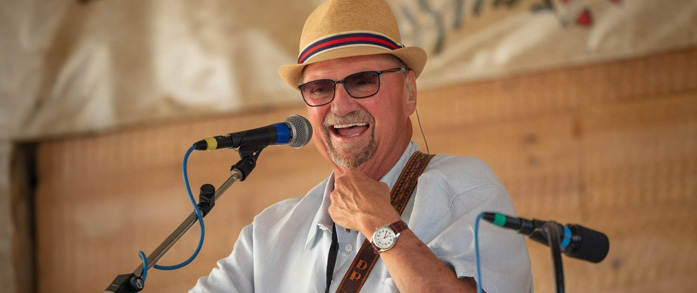
Danny Paisley: The past reverberates in the music Paisley has made and continues to make. In its execution, and in the honesty of his muscular, versatile voice, it’s as true and undiluted a style of bluegrass as the genre can offer.
Danny Paisley Redux
By David McGee
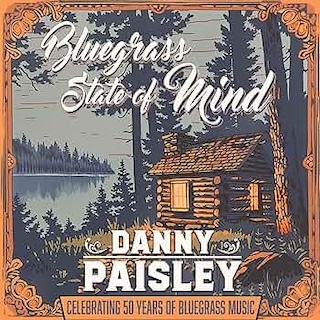 BLUEGRASS STATE OF MIND
BLUEGRASS STATE OF MIND
Danny Paisley
Pinecastle Records
For a half century Danny Paisley, Pennsylvania native based in the southeast corner of the Keystone State, Maryland and Delaware, has been a stalwart practitioner of the traditional bluegrass music he has been hearing and absorbing since he was a lad. He wears it as a badge of honor to be extending a tradition so important to the “hard working…hard living” transplanted Southerners in the region, some of whom are musicians who have “preserved a lot of the music over the years.” (Quotes are from an interview with Paisley posted at Americana Highways.)
So the past reverberates in the music Paisley has made and continues to make. In its execution, and in the honesty of his muscular, versatile voice, it’s as true and undiluted a style of bluegrass as the genre can offer. At the same time, to advance his bluegrass state of mind, Paisley is backed by giants of genre tradition, including Darrin Vincent on bass, Scott Vestal on banjo, Andy Leftwich on guitar, mandolin, and fiddle, Josh Swift on dobro, Greg Cole on percussion, his son Ryan Paisley on mandolin and vocals, and Sage Palser adding additional vocals. The big show vocally, as always, is Paisley, his voice strong and deeply invested in the texts, which in and of itself is a remarkable fact, since this is his first album since being sidelined by treatments for throat cancer. And yet here he is, sounding not merely as affecting as ever, but doubly so in the energy infusing his rhythmic phrasing and the vigor he exudes with every breath. He credits son Ryan for nudging him to stretch his approach on “Cream in My Coffee,” a David Stewart-William Brice Long co-write with its clipped verses (close to talking blues) and close-harmonized celebratory choruses in a song devoted to breaking free of the 9-to-5 schedule and getting tight with a loved one, all of it rolling out over a sprightly soundscape fashioned with sunny energy by banjo, mandolin and dobro.

‘Till Lonesome Comes Around,’ a David Stewart-Mark Brinkman co-write, performed by Danny Paisley on Bluegrass State of Mind

‘Cream In My Coffee,’ a David Stewart-William Brice Long co-write, performed by Danny Paisley on Bluegrass State of Mind
A major contributor to Bluegrass State of Mind, David Stewart contributes, as a co-writer, to five of 10 songs here including an aching portrait of a man haunted by lost love in the traditional country strains of “Till Lonesome Comes Around,” on which teamed with Mark Brinkman (talk about a dynamic duo); and Danny’s heartbreaking close-harmony duet with a soaring Sage Palser on “What Crosses Your Mind,” a Stewart co-write with Palser, who gives it the high lonesome cry that tells you she knows whereof she sings. One of the interesting covers—or a cover with an interesting history—is the moaning fiddle-fired treatment of “Have I Stayed Away Too Long,” a tune written by Great American Songbook great Frank Loesser and first recorded in 1943 by both Tex Ritter and Perry Como—the latter, in fact, recorded his version during a musicians’ strike; in lieu of musical instruments, Como is backed by a close-harmony vocal group filling up the track with a prominent bass singer laying down the bottom, in an arrangement meshing Ritter’s laconic western approach with group harmony backing a la the Mills Brothers. Among the dozens of other artists that have covered the song, the Louvin Brothers committed it to wax in 1958, and indeed, Paisley’s engaging arrangement echoes the keening Louvins harmony in all its mysterious affect, both worldly in its evocation of having lost something precious—the love of another—and otherworldly in the intensity of its painful expression. Paisley also does a powerful job with Hank Williams’s “Six More Miles” (the B side of his classic 1948 hit, “I Saw the Light”), slowing the original tempo, dropping Hank’s slap guitars in favor of his son Ryan’s sparkling mandolin solos, and adding Josh Swift’s stinging dobro to the mix, as Danny delivers a measured vocal evoking the dulling inner desolation the song’s protagonist can’t hide as he’s about to bury his beloved.

‘Six More Miles,’ written by Hank Williams (1948), performed by Danny Paisley on Bluegrass State of Mind
Ultimately, no one summarizes Danny Paisley’s achievement better than Mark “The Shark” Druery in his review of Bluegrass State of Mind in Indieshark Magazine (July 8, 2025), in which he observes: “In an era obsessed with the future—streaming algorithms, viral singles, boundary-blurring genre splicing—it’s easy to forget that music can also be an act of preservation. Danny Paisley’s new album, Bluegrass State of Mind, stands as a quiet but insistent testament to the radical idea that tradition, lovingly tended, is itself a form of progress.”
Well said, and on the money. Danny Paisley redux is Danny Paisley at his best. Welcome back.



